Urban gardening: a leisure trend that is bringing nature into the city
Urban gardening is helping nature return to the city. We’d like to share our best tips and tricks with you for transforming your city balcony into a feel-good oasis, while also doing the environment a favour.
Everyone needs their own personal refuge where they can switch off from the daily stresses of life, right? But of course, not everyone has a place like this, especially in cities where there are far fewer green spaces in comparison to living out in the countryside. Nature is still an important factor when it comes to a good quality of life, for people living in cities. So, what about having your own green space with flowers and herbs? Somewhere you can relax and pick your own home-grown fruit and vegetables? For many city dwellers, urban gardening can turn this dream into a reality.
So, what is this trend actually about? Urban gardening literally involves setting up a garden in a small space in the middle of a city or on your own balcony. The main thing is that it’s a mindful activity: a hobby that should bring peace to your mind and body, away from the stresses of daily life. The growth of this new lifestyle trend is probably due to an increasing sensitivity to environmental issues and an awareness of good nutrition, protection of the environment and the joy of locally produced food, together with people’s general desire to be out in nature. Urban gardening is experiencing a boom in these times dominated by the coronavirus, climate change and advancing digitalisation, as an increasing number of people long to find refuge in nature, where their imagination can run wild. It certainly isn’t true that everyone has their own garden, especially city dwellers, but growing vegetables or herbs on a balcony or roof terrace really isn’t that difficult! We’ll show you a few simple tricks for transforming your urban outdoor area into a green feel-good oasis.
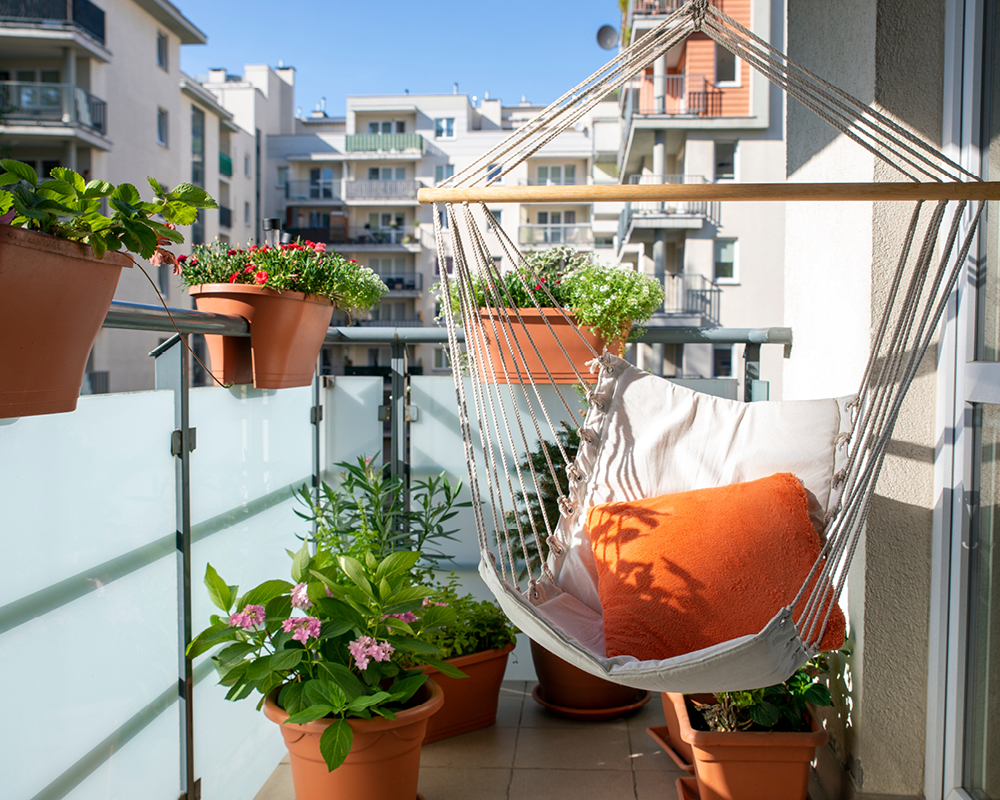

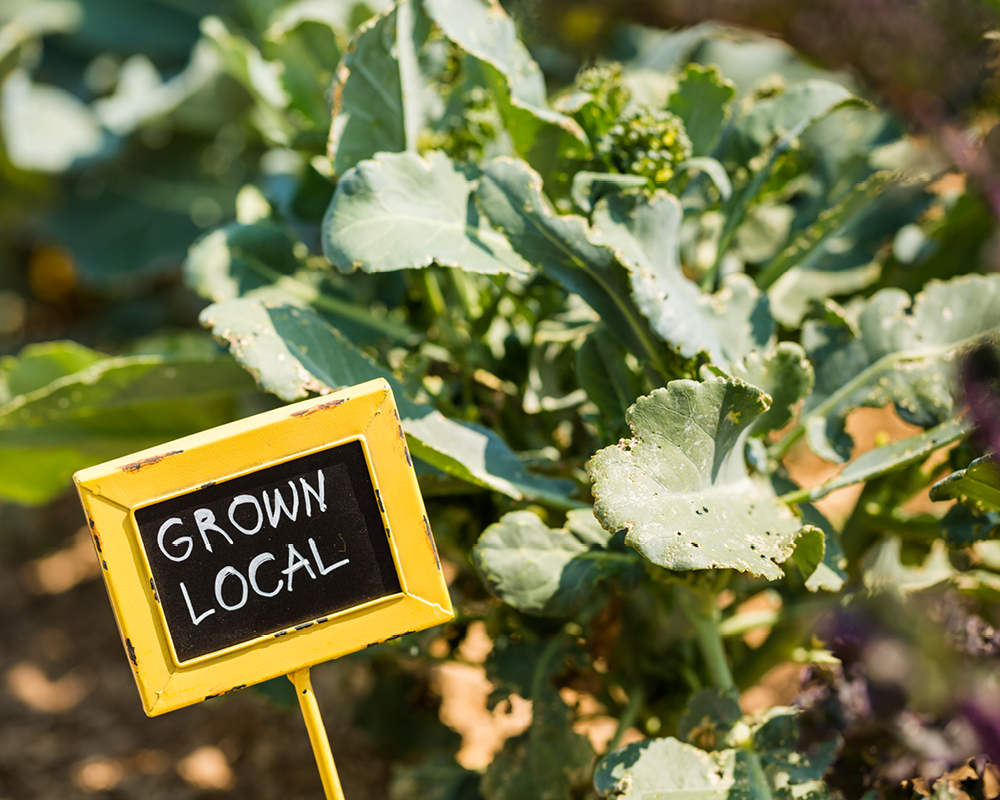

1. Requirements
Before you decide on a particular type of plant, it’s essential that you check the direction of your balcony. If it’s south-facing, then almost anything is possible, as the plants will get plenty of sun. Heat-loving herbs and vegetables like tomatoes, cucumbers and peppers are an ideal choice in these conditions. Even strawberries grow really well on a south-facing balcony. Fruit and vegetables, with some limitations, can also thrive on west- or east-facing semi-shaded balconies. Spinach, chard and cress particularly enjoy being in the shade. If you have a north-facing balcony with very little sunshine, then we recommend planting a herb bed. This will also be wonderfully aromatic and will provide a splash of green in your outdoor urban area.
2. Easy-to-grow plants for beginners
Herbs like basil, chives and parsley are the perfect choice for beginners as they are very easy to look after. As well as providing a relaxing fragrance on your balcony, they are also extremely practical: you can just pop out and pick some chives to add to your lunch, or some mint for an evening aperitif. It’s actually quite easy to grow herbs in a pot or a raised bed, without any need for a garden. There’s an almost limitless choice of herbs, with the basics including parsley, rosemary, basil, chives and thyme. However, please note that not all herbs can be put together in the same pot. Plants need to be carefully coordinated so that they complement each other. Basil and rosemary work wonderfully together, for example. Rosemary actually encourages the basil to grow, while the basil plays a protective role, combatting mildew, white flies and mosquitoes. Chives and thyme or dill and parsley are other absolute dream teams and can be planted together in one pot.
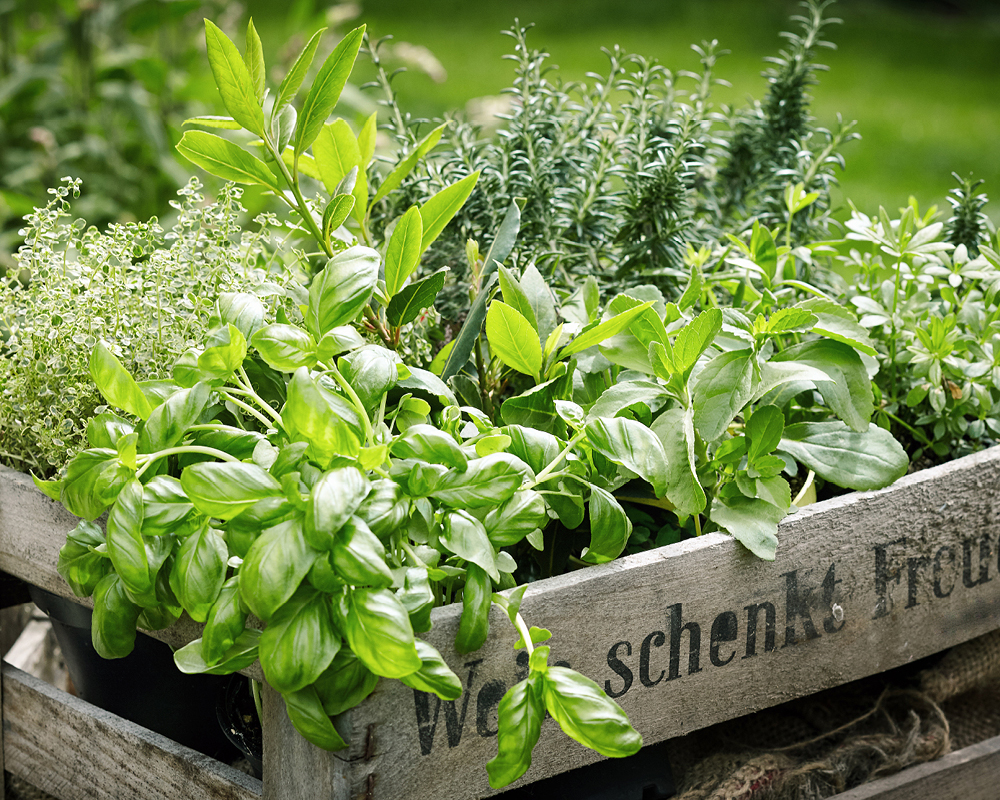

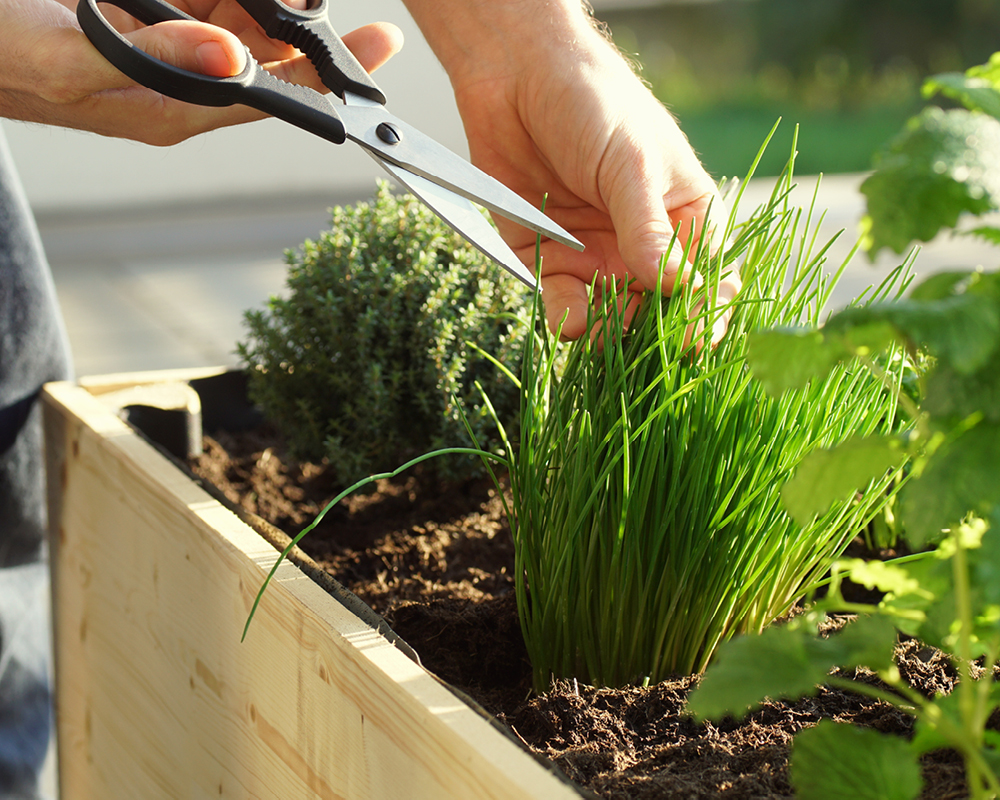

3. Supporting biodiversity
Another good reason for taking up this hobby is to preserve biodiversity, or the range of plants available to us. Popular perennials like geraniums, herbs or tomatoes don’t need to be the only things on your urban balcony. Feel free to choose other varieties that are rarely grown commercially. Have you thought about maybe sorrel or garlic chives on your balcony? This is a way of keeping the city green and you’re also helping the microclimate and air quality – important factors in supporting the habitat of people, animals and pollinating insects.
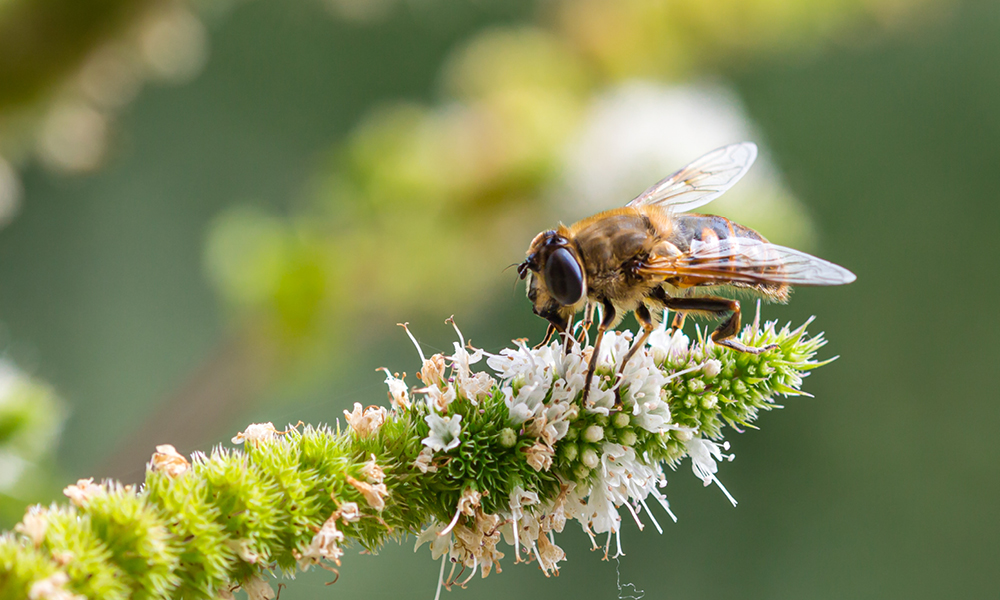

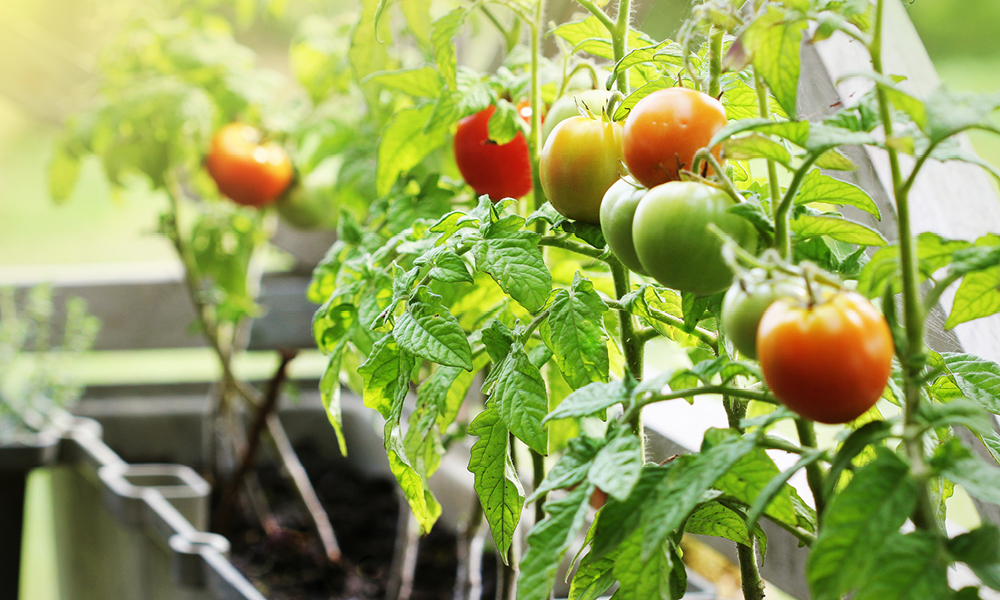

4. Growing fruit and vegetables
Fancy picking your own tomatoes to make a Caprese salad for lunch, right in the middle of the city? No problem! For many types of fruit and vegetables, you don’t need a large growing area at all. Strawberries, carrots, lettuce or tomatoes will grow just as well in a tub or window box. Fruit and vegetables thrive best on south-facing balconies, but east or west-facing locations can also work just fine. Strawberries, peppers, chillies and tomatoes work well, even for newcomers to the urban gardening trend. Any containers with a minimum capacity of ten litres are suitable for growing on a balcony, including window/balcony boxes, pots and bowls. Snacking fruit and vegetables also thrive well in small raised beds, and strawberries grow particularly well in hanging baskets. Anyone who finds it too time-consuming to propagate their own plants from the middle of March onwards can just buy young plants from the garden centre and then plant them directly on their balcony.
5. Planting flowers
Having flowers on your balcony will not only put you in a good mood, but will also provide an important source of nectar for bees and butterflies. Follow a few tips and your balcony will soon be in glorious full bloom. Once again, it’s important to check the specific requirements when choosing your plants. Check the light conditions and the position of your balcony, and make sure you plant your flowers at the right time of year. Here in Austria, we say the Ice Saints’ Days (11 – 15 May) are a good time for safe frost-free planting, and transforming your balcony into a mass of flowers. Generally speaking, the best time to plant your seedlings is after the last possible frosty night of the spring. If you are already itching to get your green fingers working, then try frost-resistant spring flowers like pansies, horned violets, hyacinths, primroses, tulips or ranunculus.
How suitable plants are for your balcony depends primarily on the natural light conditions. Geraniums, petunias, lavender, million bells and heliotropes, for example, are sun lovers. Hydrangeas, busy lizzies or fuchsias are suitable for shady balconies.
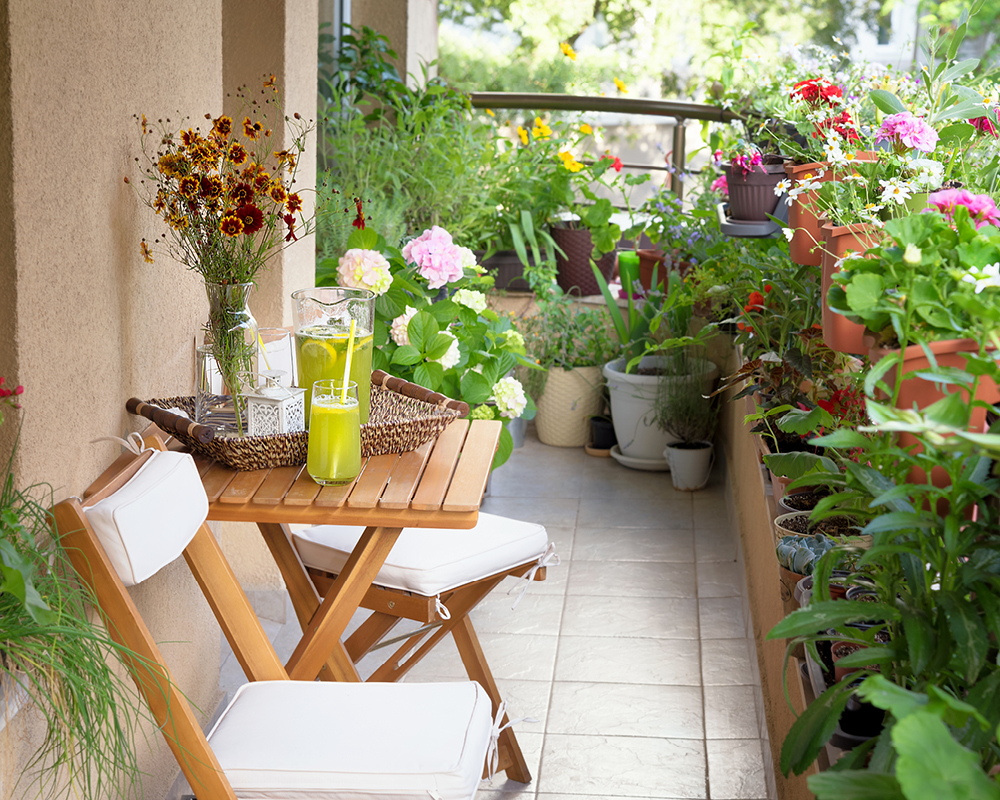

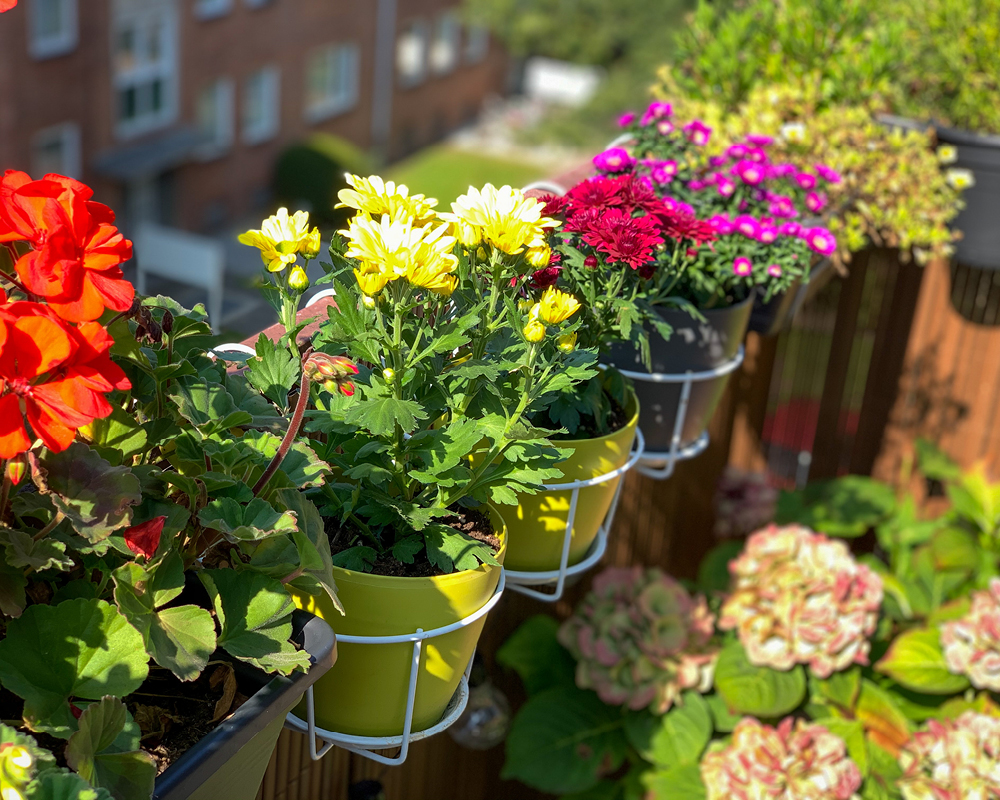

6. Regrowing completes the cycle
The regrowing principle means you can give new life to your leftover vegetables. Food leftovers don’t necessarily have to be thrown away after you’ve finished cooking. Cuttings from some types of fruit and vegetables can be used for propagation. And the best part is that you don’t need a garden! A windowsill in your city apartment is perfectly fine. Regrowing is a way to propagate vegetables, and it works with plant types where the vegetable waste contains the same genetic information as the complete plant. In the case of lettuce, potatoes, spring onions, celery or leeks, a new plant can be regrown quite easily from the remains of the parent plant. For spring onions and leeks, for example, you just need the white end with the roots. Put this in a jar of water with the roots downwards, then place it in a well-lit place and top up with fresh water every couple of days. After a few days, the regrown ends can just be cut off and used.
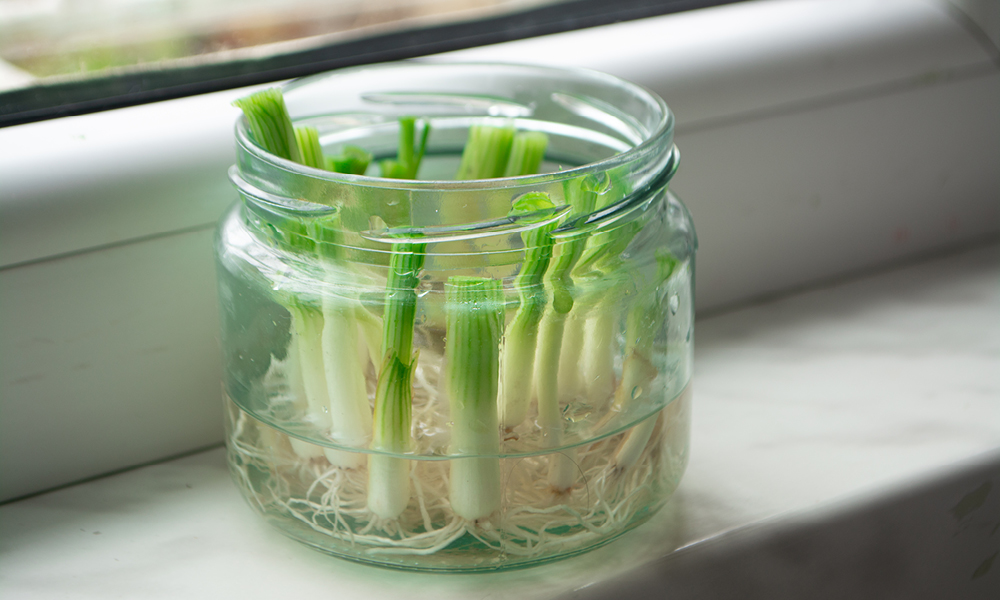

And the final tip we want to give you – just have fun! Obviously, not everyone has got green fingers, but this is an opportunity for you to discover new skills and to transform your urban outdoor area into a personal refuge, surrounded by nature, and also to do something good for nature and the environment at the same time!
